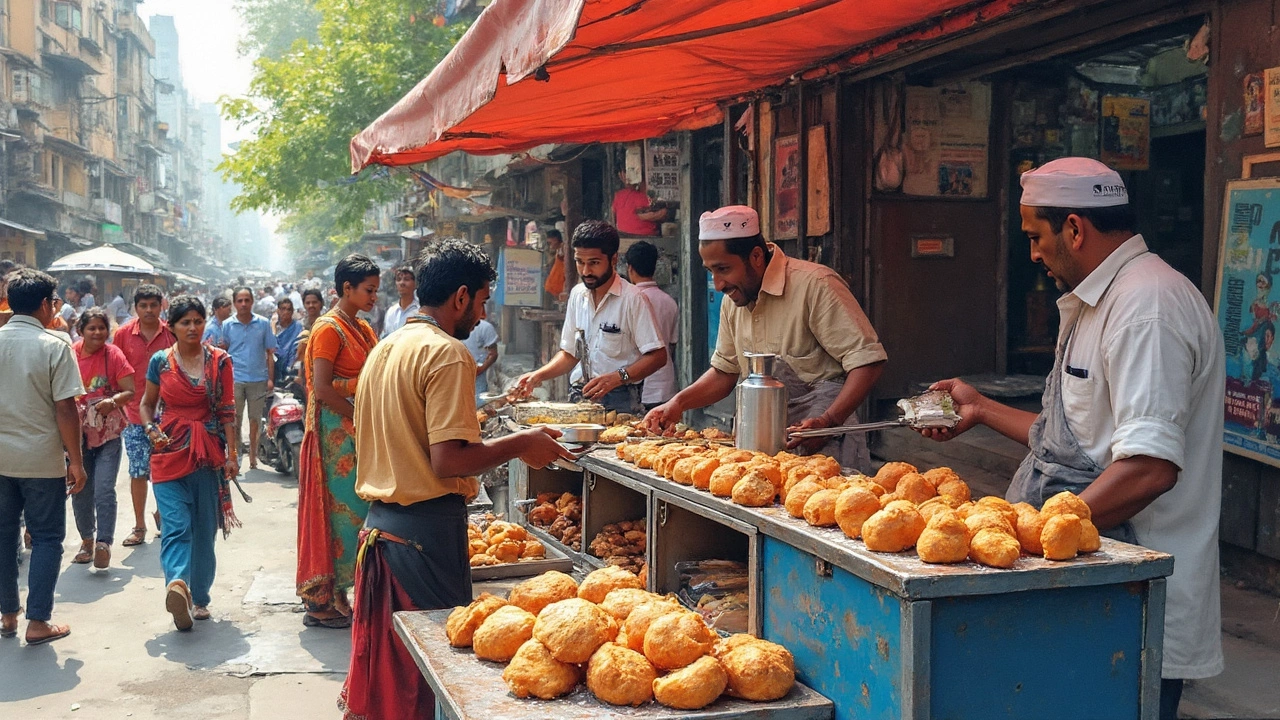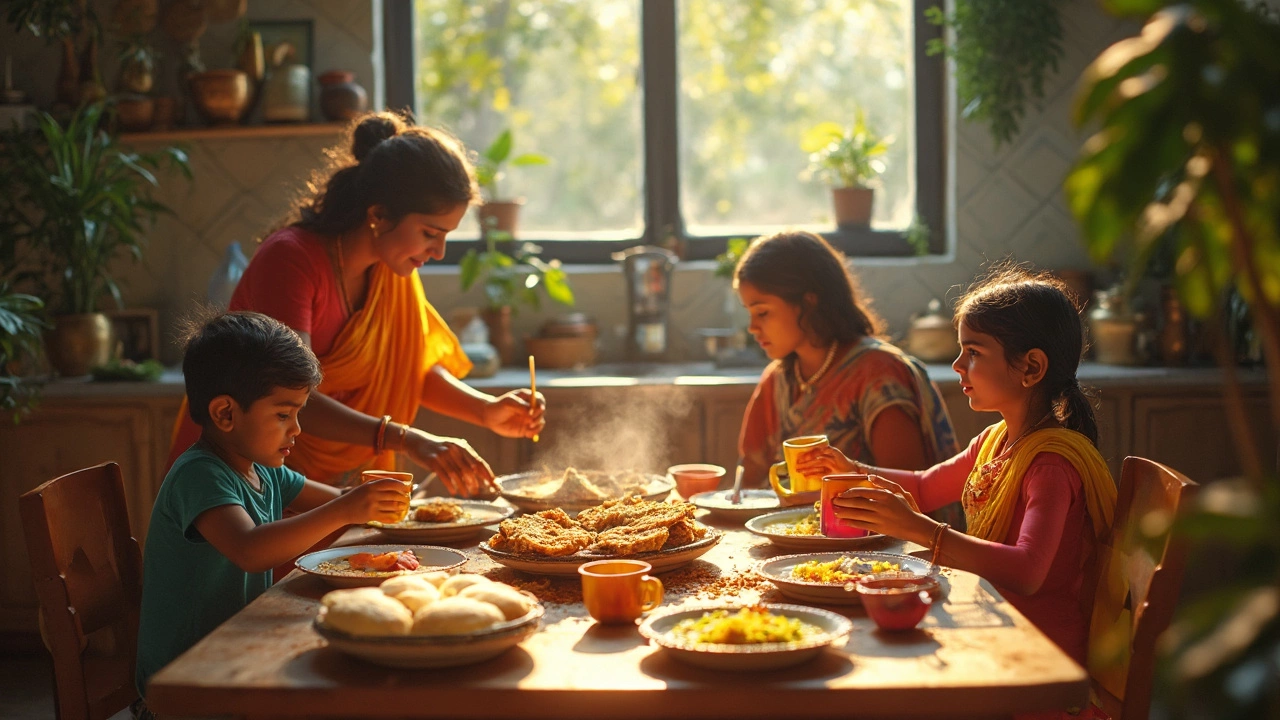If you step into an Indian home around breakfast time, don’t expect a bowl of cereal or a pancake stack. The variety is huge—it actually changes depending on where you are in the country. From fluffy idlis in Chennai to spicy poha in Mumbai, breakfast isn’t just a grab-and-go affair. It’s warm, filling, and very much a big part of daily life.
For folks in a hurry (and honestly, that’s most of us these days), you don’t need to spend hours in the kitchen to get a proper Indian breakfast. Many dishes use ingredients that are already in most kitchens and need less than half an hour to prep. Even something that looks fancy, like upma or a quick masala omelette, can be done before your coffee gets cold.
You’d be surprised how a dash of fresh coriander or squeeze of lime can totally change your breakfast game. If you’re not big on spicy food, just dial it down. The best thing about these breakfasts? You can always mix and match to suit your own style (even Max and Olive get curious when the kitchen smells like dosa batter).
- Mornings Across India: What’s On the Plate?
- Quick and Classic Breakfasts You’ll Find Everywhere
- Fast-Track Steps: Making Indian Breakfast in Minutes
- Breakfast Tips and Fun Facts
Mornings Across India: What’s On the Plate?
Ask anyone what a typical breakfast in India looks like, and you’ll get completely different answers depending on where they grew up. It’s not just about filling up before work or school—breakfasts often reflect family tradition, local ingredients, even the weather. Forget about one single national dish. Here, food habits change every few hundred kilometers.
For example: in South India, people wake up to plates of idli (fermented rice cakes), dosas (crispy fermented crepes), and upma (a savory, lightly spiced semolina dish). These meals are usually served with chutney and sambar—basically, nothing plain or boring to start the day.
Travel north, and things look different. You'll see parathas (flatbreads stuffed with potatoes, cauliflower, or paneer), served hot with curd or a pickle on the side. If mornings are cold, some families make poha—a fluffy rice flake dish in western India—or even a bowl of piping hot dalia (wheat porridge) in Delhi and nearby regions. Got a sweet tooth? Bengalis in the east might reach for luchi (fried flatbreads) with aloo torkari (spiced potatoes).
Don’t forget that eggs are a favorite, too—omelettes or boiled eggs with toast show up in a lot of kitchens, especially on busiest mornings. And yes, chai (tea) is almost always around, sometimes paired with biscuits if you’re really rushing.
- South: idli, dosa, upma with chutneys
- North: parathas, dalia, chole (spiced chickpeas), curd
- West: poha, thepla (spiced flatbread), misal pav
- East: luchi, chire bhaja (crispy rice flakes), vegetable stews
- Across the map: quick masala omelettes, toast, chai
It’s rare to find cold, pre-packed breakfast here. Most people lean towards something warm, often made from scratch or at least tossed together fresh. That’s what makes Indian mornings unique—everyday meals that are practical, flavorful, and rooted in where you are.
Quick and Classic Breakfasts You’ll Find Everywhere
No matter where you travel in India, there’s a shortlist of breakfasts that pop up over and over again. They might taste a little different from city to city, but they share two things: they’re easy to make and keep you full for hours.
Here are some tried-and-true dishes you’ll spot in homes, roadside stalls, and even office lunchboxes:
- Poha – Flattened rice cooked up with onions, peas, turmeric, and a splash of lemon. It’s done in under 15 minutes.
- Upma – Made from roasted semolina and seasoned with mustard seeds, curry leaves, and veggies. Great for busy mornings.
- Idli & Sambar – Soft, steamed rice cakes dipped in a spicy lentil soup. Super light but surprisingly satisfying.
- Aloo Paratha – Stuffed wheat flatbread filled with spiced mashed potatoes, usually served with yogurt or pickle. If you wake up hungry, this is a favorite in North India.
- Dosa – Thin, crispy crepe-like pancakes made from fermented rice and lentils, served with chutney or sambar. With instant batter mixes, even sleepyheads can whip these up fast.
- Pesarattu – A protein-packed crepe from Andhra Pradesh, made with green gram—quick, tasty, and without complicated steps.
Want something even simpler? Toasted bread with a spicy masala omelette is just as Indian as it gets—especially with a dash of fresh coriander. It’s like the backup plan everyone relies on.
Breakfast in India doesn’t mean heavy, greasy foods. It’s usually steamed, roasted, or lightly pan-fried.
Here’s a quick glance at how much time, effort, and cost these breakfasts usually take:
| Dish | Prep & Cook Time | Difficulty | Estimated Cost (for 2 people) |
|---|---|---|---|
| Poha | 15 min | Easy | ₹40 |
| Upma | 20 min | Easy | ₹50 |
| Idli & Sambar | 30 min (with pre-made batter) | Medium | ₹60 |
| Aloo Paratha | 25 min | Medium | ₹45 |
| Dosa | 20 min (with instant mix) | Easy | ₹55 |
| Pesarattu | 20 min | Easy | ₹45 |
So, if you’re aiming for a typical breakfast India experience or want a quick bite before work, these dishes have you covered.

Fast-Track Steps: Making Indian Breakfast in Minutes
If you have just 15–20 minutes, you still have plenty of options for a quick Indian breakfast. The trick is to use ingredients that are already in your pantry and skip anything that needs grinding or deep frying. Here’s how you can pull off popular breakfasts without breaking a sweat.
- Poha: Rinsed flat rice, onions, peanuts, a pinch of turmeric and salt—just toss everything in a pan, stir for 7–10 minutes, and finish with lemon juice. No chopping skills? Poha works even if you only use onions or skip the peanuts.
- Upma: You just need semolina (sooji), a bit of oil, and mixed veggies. Heat the oil, toss in mustard seeds, onions, chopped veggies, then add semolina. Stir in hot water, cover for 3 minutes, and it’s ready. Swap the veggies based on what’s sitting in your fridge.
- Besan chilla: Mix chickpea flour with water, salt, and whatever chopped veggies you like. Spread on a pan like a pancake, cook both sides, and you’re done in 10 minutes. These are naturally high in protein, no fancy sides required.
- Masala Omelette: No time for boiled eggs? Chop onions, tomatoes, green chilies, mix into eggs with salt, and cook in a pan. Serve with toast or just roll it up and go.
If you’re super short on time in the morning, prep veggies or spice mixes the night before. Many Indian families keep pre-chopped onions or even roasted sooji in their fridge. Another trick? Plain yogurt mixed with chopped fruit and honey works just as well for those "no-cook" days, and it still tastes Indian with a sprinkle of cardamom or cinnamon.
A microwave is a lifesaver—upma and poha come out just fine if you want to use it. Instant oats get an upgrade with jaggery and some sliced banana or roasted nuts. If you keep dosa or idli batter in the fridge (available ready-made in most Indian grocery stores), instant dosas or steamed idlis are only a few minutes away. If my cat Olive leaves the batter alone, of course!
Breakfast Tips and Fun Facts
You don’t have to grow up in India to enjoy a proper Indian breakfast. Here are some real-world tips and unexpected facts to make your morning both tasty and stress-free.
- Prepping batter the night before saves so much time. For things like dosa or idli, many people just mix and let it ferment overnight.
- Keep a stash of basic spices: cumin, mustard seeds, turmeric, and chili powder. These give any quick Indian dish its kick.
- Pairing matters! In South India, breakfast is rarely eaten without chutney or sambar, which are perfect for dipping or scooping up bites.
- If you’re looking to boost protein, try adding a boiled egg or making a masala omelette with onions, chilies, and coriander.
- For an instant breakfast fix, poha and upma both cook up in under 20 minutes and are naturally vegetarian. Handy for busy or lazy days!
Now for some quick facts you might not know:
- Packed tiffins aren’t just for lunch; in cities like Mumbai, people grab a quick breakfast tiffin on their way to work. Roadside vendors sell everything from vada pav to piping hot chai.
- The typical breakfast in India changes every 100 kilometers—what you get in Delhi is completely different from what’s served in Hyderabad or Kochi.
- India actually leads the world in variety when it comes to breakfast—over 200 local types, according to a 2023 food tourism report.
- Even snacks like samosas or jalebis sometimes double as a morning meal. Yep, spicy or sweet, there aren’t really rules.
Check out this mini table to see how fast you can whip up common Indian breakfasts:
| Dish | Average Prep Time | Main Ingredients |
|---|---|---|
| Poha | 15 min | Flattened rice, peas, spices |
| Upma | 20 min | Semolina, veggies, spices |
| Masala Omelette | 10 min | Eggs, onion, green chili |
| Dosa (with batter ready) | 10 min | Fermented batter, oil |
No matter what you pick, the best breakfasts are the ones that make you want to get out of bed, not snooze your alarm again. Pro tip: always make enough to share—pets and people both seem to flock to an Indian kitchen on breakfast days!
